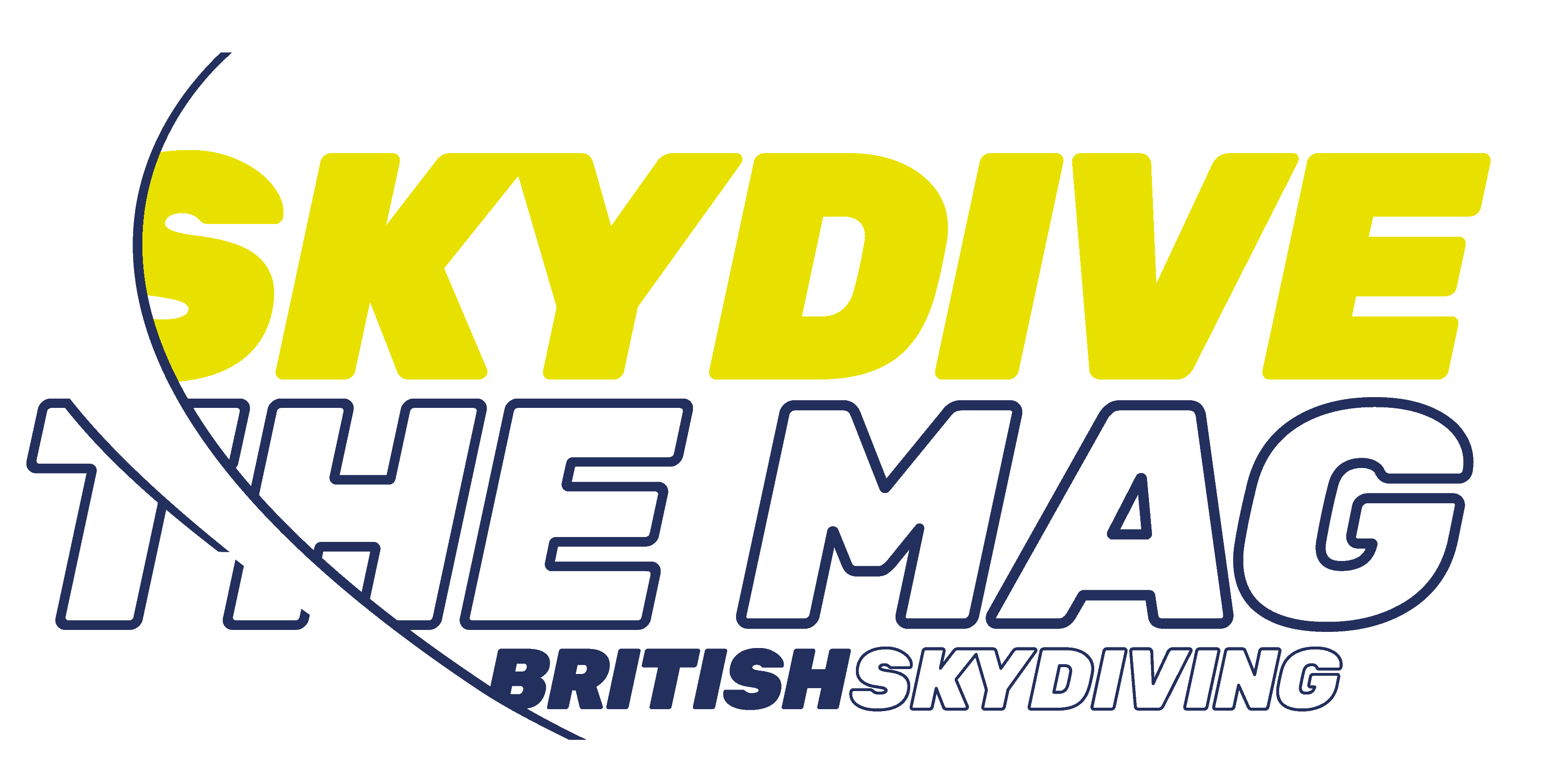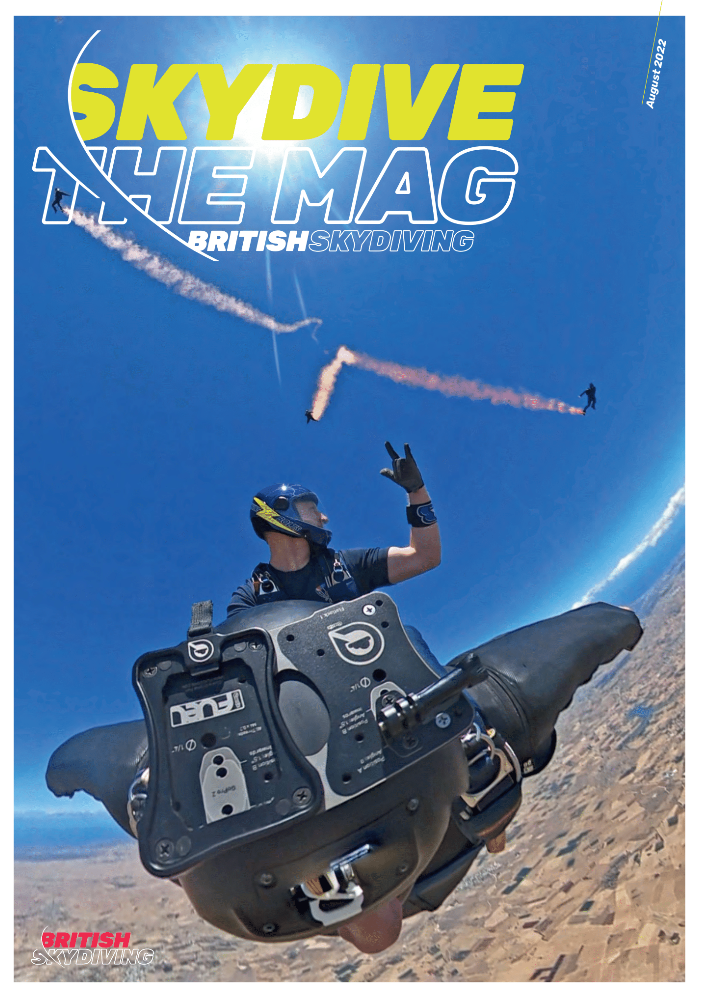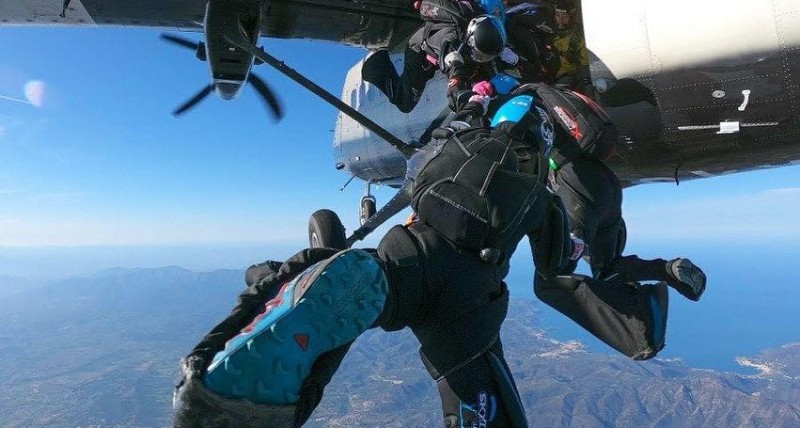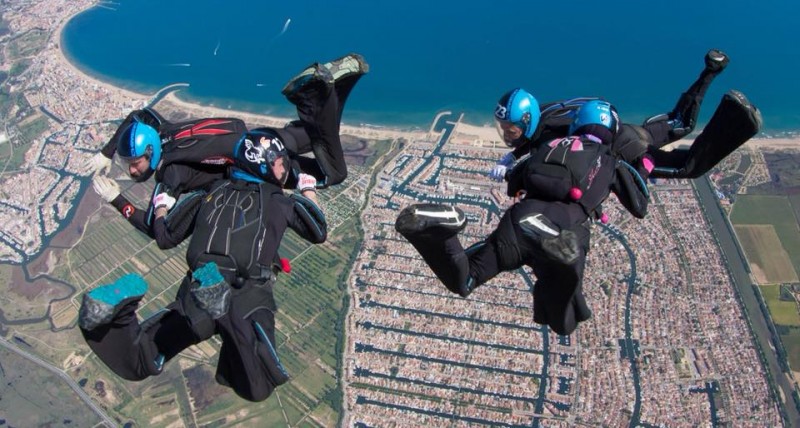Breaking into the Bigway scene by Fleur Jones
Brian Cumming has a vision. It is his mission to cultivate skydivers and introduce them to opportunities to develop themselves wherever he can. Whether they are younger or older, experienced or not, or aspire to work in the industry as ambitious camera flyers, budding load organisers or potential coaches or instructors, Brian offers a helping hand.
I class myself as someone who is privileged to experience this guiding hand, and so I share my journey from novice to Load Organiser with you, in the hope that it might inspire you to achieve more than you ever thought possible.
Each year Brian runs a unique ‘Bigway Skills Camp’ at the most fantastic dropzone – Skyvan Pink in Klatovy. He is assisted by Rob Kendall – Sun Path Products Inc’s European Rep, and an eminently experienced Load Organiser, and also by our dear friend, Martin Skrbel – so sadly lost to us recently – who leaves us his legacy as an ace camera flyer and a highly successful full-time professional skydiver. Brian took Martin under his wing several years ago and had the absolute delight and privilege of watching his talent unfold. Over the years they have honed the skills camp to a slickly organised machine that delivers what it promises. But ‘a skills camp’, I hear you say? What’s so unique about that? Well, let me tell you…

Starting out
Traditionally the Bigway scene is challenging to break into, which I know from experience. I used to wonder, “how do I get an invite, a reference, an opportunity? What position could I fly, what if I mess up? Where on earth do I start? Bigway Load Organisers appear as gods to me – a mere mortal – they surely won’t be bothered with me?” The Bigway world can feel very ‘closed shop’ from the outside, and discouraging for many, I am sure.
My Bigway experience started in 2013, when I attended the Brit Chicks event at Langar. I knew I was a competent flyer, having been part of the Satori Academy. But, frustratingly for me, no-one in the Bigway scene knew who I was, or my skill level, and I wasn’t from Langar, the ‘mecca’ DZ for Bigway in the UK. I was put in the ‘bench’ group – the name for the reserve squad on a Bigway – and quite rightly since I was an unknown. Under the guidance of the fantastic Load Organisers Kate Cooper-Jensen, Lesley Gale and Siân Stokes (see what I mean – gods I was totally in awe of), I learnt quickly and proved myself. I was given the ‘OK’ to transfer into the main group, albeit then being scuppered by the weather!
From there I had finally gained a reference, which I was then able to use to attend events such as Euro Bigway, and eventually I received invitations to fly with Jim Bradwell and also with Ronny Holen and his outstanding Norwegian Bigway groups in Klatovy. But I remember coming away from that first Bigway experience bemused at how any new blood was ever expected to be able to break into the scene, especially if you’re someone that doesn’t have the confidence to put yourself out there or even know where to start.

Happy campers
This is where Brian and his Load Organising team scores. He wants to make Bigway accessible, and I have that passion too, to breathe new life into Bigway. And so the camp explores an alternative, graduated learning process which acts as a stepping stone to provide the key to unlock the door to Bigway.
Though there are many fantastic camps around the UK and further afield, run by amazing Load Organisers, from which the experienced Bigway skydiver can benefit and learn and hone their skills, this camp was rather unique in that it provided an opportunity to those who had never experienced Bigway flying before. The aim of the camp was to learn and perfect FS flying skills pertinent to Bigway, to learn about the theory and practice of Bigway, to experience multi-plane Skyvan loads AND put all these newly acquired skills into practice in an unpressurised, ‘no-blame’ environment.
Having attended several of Brian’s camps in Klatovy previously, I was sold on this concept. This particular camp, the Bigway Skills Camp, is designed for 20-23 ways with each 20-23 way group being assigned a Load Organiser. On day 1, those 20+ way groups are initially split down into groups of 10+ to begin to practise exit and flying skills, gain confidence in tracking and also for the LOs to assess safe canopy control.

Learning to LO
In 2020 I was given the opportunity, under the guidance of Rob and Brian, of leading one of the 10+way groups. I learnt shed loads and I came away SO inspired. I loved the effect I had on my group; to be able to give hints, tips and feedback that worked and improved their performance whilst maintaining a happy, focussed team – just a simple thing like being able to tweak the angle of someone’s exit, and see the joy and success that brought to their skydive, or to be able to reassure them that they could do this, and see their confidence soar – these were treasures to lock away in my heart and dig out on the dark days when I doubted myself and my abilities.
To my absolute delight, I was invited back to be one of the ‘proper’ Load Organisers for the 2022 camp, along with Laura Hampton. What an honour! Inside I knew I was up to it and I felt I would be an asset to the camp, though I felt heavily the weight of the responsibility and the trust that was being placed in me.
And so at the end of May, 96 excited, happy, expectant skydivers descended on Klatovy in the Czech Republic, full of anticipation for the four days ahead. Of these, 53 were British Skydiving members.


Preparation is key
All areas of Bigway were addressed during the camp, but what happens in the weeks leading up also contributes to its participants’ successes. Online seminars were run to introduce or remind participants about the concepts of Bigway, such as exit frames, quadrants, radials, break offs and so on. Reading material was also provided, and some participants undertook a tunnel program of specific skills.
On the warm up day the focus was on educating the participants in the differing roles on exit and how to identify, target and approach the formation and slots. Rob provided an outstanding tracking seminar whilst we were waiting for the weather to clear.
Careful planning and preparation meant that all the participants were, prior to the camp, assessed in terms of fall rate and experience, and therefore the 23+ ways were evenly balanced so that learning could be shared and maximised. Breaking with typical Bigway tradition, after several jumps the Load Organisers moved the flyers around from their ‘comfort’ slots (i.e. heaviest/fastest in the base, lightest/swiftest as divers or floaters). People were moved to a place that 1) they would not traditionally be assigned to in a Bigway formation, and 2) they may not ever have the courage to attempt in a ‘normal’ Bigway for fear of ‘messing up’. As I explained to my team, this is not only an exercise in testing their own abilities, but it also gives the participants an understanding and appreciation of the roles of the others in the group, leading to a more cohesive team spirit, which is so important in any group endeavour.

There were 96 slots on the camp (88 participants, 4 cameraflyers and 4 LOs) so each of us organisers were in charge of 23 skydivers including our cameraflyer. Paul Rimmington and I were paired together, Laura with Amber Ruxton, Brian with Martin Skrbel and Rob with Alex Potter. Rob and I worked as a team, sharing the two Skyvans on our rotations, and Laura and Brian worked together. When it came to multi-planes, half of each of our groups were in the lead plane with the LOs and the other half were in the trail plane with the camera person. Then, to experience the other side of the story, after several jumps the slots were switched so that the lead plane jumpers were put into the trail plane and vice versa. After two days, Rob and I swapped groups as did Laura and Brian, so although there was consistency, there was also the opportunity for the participants to experience another LO’s coaching.

Skills and sensations
There was emphasis on non-grip flying, to improve control and fall rate. Tracking and the safety aspects of tracking teams and fanning out, which many of the participants had never done before, was also a big focus. From my experience of teaching ballet, I place a lot of emphasis on ‘feeling’ in the body – I am very keen that flyers really ‘feel’ what their muscles are supposed to be doing on each part of the skydive. For tracking I got everyone to stretch their legs, think about pushing their knees through to the backs of their legs and point their toes so that they could really feel the energy needed in these parts of the body. I then asked each skydiver to register in their mind what the feeling was in their legs and feet when they did that on the ground, then tell them to find that feeling again when tracking in the air. In the debriefs I asked for a show of hands as to who had actually achieved that feeling in their track, and as the jumps went on the hands went up more and more and the tracking improved significantly, much to the delight of the skydivers!

My group were also subjected to lying or kneeling on the grass to recreate stadium approach as best as possible when dirt diving. This meant they could see colours of rigs and helmets and ‘focus points’ to lock on to, whilst trying to create a similar distance to that to be expected in the sky. Not ideal in the inclement weather that we suffered, but a great way to try to visualise the formation.
I particularly wanted my group to be aware of their peripheral vision, and not to become sucked into ‘target fixation’. Therefore we worked on recognising how the Load Organiser would be placed in relation to the line of flight (it was my job to ‘square up’ the base on exit so that I flew directly in line with the tail of the plane) and for everyone to identify where they needed to be in relation to me. We then expanded this visual picture so that each flyer included one other base reference in their sight picture and several other references (in front and to either side of where they needed to be). Also important is an awareness of who was supposed to be behind them, just in case that person somehow ended up in front of them. Dirt diving in gear is essential for this, as only then can you see the colours you need to memorise, and also use the opportunity to identify if there are any similar colours which aren’t your chosen reference points which could confuse you in the sky (team kit can do this!). My top tip for this was once everyone had got their sight picture, I encouraged them to close their eyes for a moment and ‘see’ their picture in their mind’s eye, then reopen their eyes and see if it still matched what was in front of them.

Safety first
Canopy control was also addressed daily, with the Load Organisers using hawk-eyes to film and watch our group’s landing patterns. Issues were addressed in an educational, non- blame approach. No-one was grounded and everyone remained safe. Prior to the camp on the warm up day there was also an option to undertake a Flight-1 course with Phil Webley specifically with Bigway in mind. Several skydivers took advantage of this and thoroughly benefitted from it.
Following the conclusion of the camp, every skydiver received a personal written feedback report with a recommendation of the next step for them in terms of their Bigway development. Each of us load organisers had homework to do, with Brian collating our comments and creating a final report for each participant that can be used as a reference by them for other events.

Best bits
And the pièce de résistance? Actually there were many… watching my group’s faces as they saw the trail plane alongside the lead plane for the first ever time, watching everyone’s delight at jumping into the Innhopp – where we take off from the DZ and land in a field next to a restaurant and have our closing party night there. But, most of all, it was knowing that I have been part of Brian’s vision and helped those on the camp to achieve and grow in confidence and in skill.
And for me? I developed my own skills, tested myself, found courage inside that I never knew I had, and learnt more than I could ever believe possible over four days. I had some wonderful feedback from my groups and from others that had observed me in action, and so I hope that I can continue to learn and work alongside Brian and his awesome team for a long time to come. And I can’t even begin to describe the atmosphere of camaraderie, support and joy that the groups had for each other as they watched themselves grow in confidence and ability over the four days.

Fleur Jones is an AFFBI, FS coach and LO and an IBA FS Tunnel coach who coaches at iFly Basingstoke: jonesfleur@hotmail.com WhatsApp 07814058899 Facebook @flywithfleur
Brian Cumming is an AFFI, FS coach and LO and an IBA FS Tunnel coach who coaches at iFly Milton Keynes and Basingstoke: brian@briancumming.com WhatsApp 07899801471 Facebook @briancummingskyfunandtunneljams
Sponsors – Sunpath Products Inc., CYPRES, PD, Cookie






